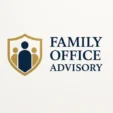Art Collection Management #
Art collection management ensures the preservation, valuation, documentation, and compliant handling of fine art, collectibles, jewelry, antiques, wine, and other passion assets. For UHNW families, art collections often represent both cultural heritage and significant financial value. A formalized management approach protects these assets, optimizes insurance coverage, mitigates risks, and supports strategic decisions around acquisition, lending, gifting, or sale.
Context & Importance #
Families frequently accumulate artworks over multiple generations, often across multiple residences and storage facilities. Without proper management, collections can incur unnecessary risk: incomplete provenance records, damage due to improper climate conditions, compliance failures around cultural property laws, or inadequate insurance. A structured framework ensures transparency, continuity, and alignment with both financial and emotional priorities.
Core Components of Art Collection Management #
- Collection inventory: Comprehensive catalog of artworks, descriptions, provenance, images, dimensions, and condition reports.
- Valuations: Periodic professional valuations for insurance, estate planning, and financial reporting.
- Insurance: Tailored coverage based on location, transit, exhibition, and changing market value.
- Provenance documentation: Legal ownership history, authenticity certificates, and acquisition records.
- Condition monitoring: Conservation reviews, climate control, and professional handling.
- Legal & compliance: Export/import rules, cultural property laws, tax considerations, and anti-money-laundering (AML) requirements.
- Storage & logistics: Secure storage, specialized transport, and installation services.
- Succession planning: Integrating the collection into wills, trusts, or foundations.
Inventory & Documentation Standards #
Accurate documentation underpins value, authenticity, and insurability. Families often maintain digital cataloguing systems to centralize and protect information.
- Digital catalogues: High-resolution images, object history, condition reports, and certificates of authenticity.
- Metadata standards: Artist, title, medium, year, provenance, exhibition history, bibliography, and appraisal details.
- Ownership records: Clear documentation supporting transfer, gifting, or sale.
- Secure access: Role-based permissions for staff, curators, attorneys, and archivists.
Implementation & Best Practices #
- Engage certified professionals: Use accredited appraisers, conservators, art historians, and specialized brokers.
- Conduct periodic reviews: Update valuations and condition reports annually or as required.
- Implement environmental controls: Maintain temperature, humidity, light exposure, and security standards.
- Use secure storage: Consider museum-grade facilities or climate-controlled vaults for high-value items.
- Define acquisition & lending policies: Approval workflows for new purchases, exhibition loans, and temporary transfers.
- Integrate with estate planning: Document intentions around distribution, donation, or duty obligations.
- Track market trends: Maintain awareness of artist markets and relevant auction activity.
Common Challenges #
- Incomplete or inaccurate provenance documentation.
- Insurance gaps or outdated valuations.
- Deterioration due to poor environmental conditions.
- Legal complexities in cross-border transport of artworks.
- Lack of transparency on ownership or transfer intentions.
- Fraud risks, including forged documentation or misrepresented works.
See Also #
- Concierge, Real Assets & Lifestyle Administration
- Data Governance & Document Management
- Family Governance
- Estate Planning




